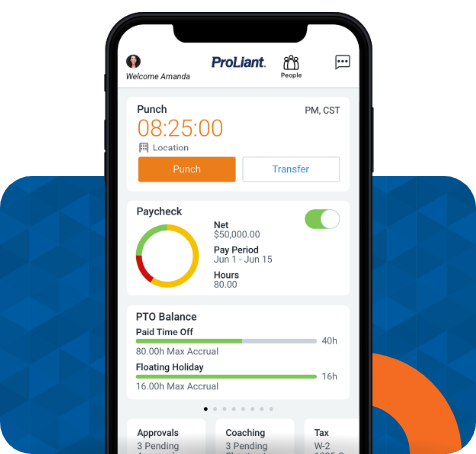If you’ve spent any amount of time on LinkedIn or HR blog pages lately, you will have seen the terms “quiet quitting” and “quiet firing.” Even though these are popular terms tossed around in the HR community, many people are still unsure of the exact meaning. So let’s take some time to discuss this trend, how it corresponds to the mental health crisis, and the need for improved employee wellness initiatives.
What is quiet quitting?
Many people believe that quiet quitting is when someone stops doing their job, waiting to get fired. However, what we’re really talking about here is more like keeping your head down and only doing what you need to get the job done. Quiet quitting is when an employee stops putting in extra hours or effort and only does the minimum required to complete their job.
According to NPR’s Planet Money, the term quiet quitting gained popularity recently due to a TikTok video by Zaid Khan. In the video, he says, “I recently learned about this term called quiet quitting, where you’re not outright quitting your job, but you’re quitting the idea of going above and beyond.” It’s all about ditching the hustle culture mentality and discovering your worth outside your job.
Many workers are not keen on the term. According to an article from TIME, some believe calling it “quiet quitting” is “negative and dangerous” because it frames the desire for a healthy work-life balance and improved mental health as quitting. Many believe there are better phrases we could be using to describe this phenomenon, and some say we should just “call it what it is” — working.
Why are people quiet quitting?
At least half of the U.S. workforce could be considered quiet quitters. Some say that more people are quitting quietly because the tight labor market has given people more security and job options, while others blame stagnant wages. However, this attitude about work is more likely due to the fact that more and more people are feeling the effects of burnout, anxiety, and stress.
According to the CDC, poor mental health and stress negatively affect job performance, productivity, and engagement with one’s work, which is what we see with quiet quitting.
Research from Fisher Phillips, a national labor and employment firm, showed more than half of employers surveyed from over 560 employers across the country fielded reports of burnout or mental fatigue from their employees this year. If you combine this with the 71% of adults in the U.S. who experience stress and anxiety, it seems clear that quiet quitting is likely a symptom of the mental health crisis prevalent in the country since the onset of the pandemic.
Quiet firing and other things employers should NOT do to address quiet quitting
Quiet firing is not new, although the phrase is freshly coined in response to quiet quitting, and it is the ultimate sign of bad management. Quiet firing refers to employers who avoid having tough conversations with their employees and make life miserable for them in the hope that they will just quit. Often management will quietly fire employees by not offering raises or advancement or by piling on duties that will overwhelm the employee they hope to get rid of. This passive-aggressive behavior is a primary reason many employees are quiet quitting in the first place, and a large percentage of people have seen this in their workplaces.
Micromanagement and Monitoring Employees
While keeping an eye on productivity is essential for measuring business success, constantly monitoring employees or threatening employee livelihoods as Google execs have done is not the way to go about encouraging workers to engage more with their work.
Still, many employers are utilizing tools to monitor employees at their computers to measure productivity. According to Nick Hobson, a Ph.D.-trained behavioral scientist, many employees have the experience “of being creepily watched, kind of like an omniscient tech god who sees and knows your every move.” Those same employees complain about being reprimanded for taking too long in the bathroom or their performance being based on screen and mouse clicks.
Hobson compares these new tools for constantly monitoring employees to the flawed performance management of the industrial revolution that tried to blend man and machine for maximum efficiency. He states that this type of monitoring and micromanagement “breaks employee trust and morale,” causing anxiety and self-doubt. He adds that it is also incredibly difficult to measure performance in this manner. So much so that it could be considered “irresponsible to say that a tool can accurately measure the output of an individual worker and rank his or her performance.”
Both quiet firing and constant monitoring for performance forget to treat employees as people with valuable ideas and contributions, and that’s why these strategies do not work.
What can management do about quiet quitting?
Good management asks the question, “If employees are not meeting expectations, how do I encourage them to do better?” Most experts agree that with the mental health crisis and other lingering ramifications of the pandemic, it is essential for management to have open conversations with employees about how they are feeling — encouraging communication is the first step to improving workplace morale, addressing mental health, and turning quiet quitters into individuals who can be passionate about their work again.
People who are quiet quitting are essentially making a statement that they don’t feel like they have a voice in their organization. It’s up to management to show them otherwise. One CEO with over 200 employees has made an effort to do just that. Vari, the CEO of Lensa, provides on-site perks at the office and remote-work flexibility, and he claims that he doesn’t have quiet quitters in his workplace because he makes certain that employees are “comfortable enough to voice their concerns.”
In addition to ensuring employees have a voice in their workplace, employers can do more to provide benefits for a better work-life balance. And research shows that there is a lot of responsibility for employers to address mental health and employee wellness, which will surely help curb the trend of quiet quitting due to burnout.
Here are some ways employers can address quiet quitting and boost engagement:
- Implement an employee wellness program to encourage healthy lifestyles.
- Update benefits to provide tools for accessing mental health care options.
- Promote wellness communication and education.
- Offer reasonable accommodations such as flexible PTO, remote/hybrid schedules, and emotional support animals.
- Implement mandatory mental health days.
Addressing the root cause of quiet quitting involves a deep look into your organization. Employee expectations have changed in the wake of the pandemic, and most people have come to value their mental health over their career goals.
Check out our recent articles for more about mental health and how to promote employee wellness and improve productivity in the workplace.







No Comments Yet
Let us know what you think